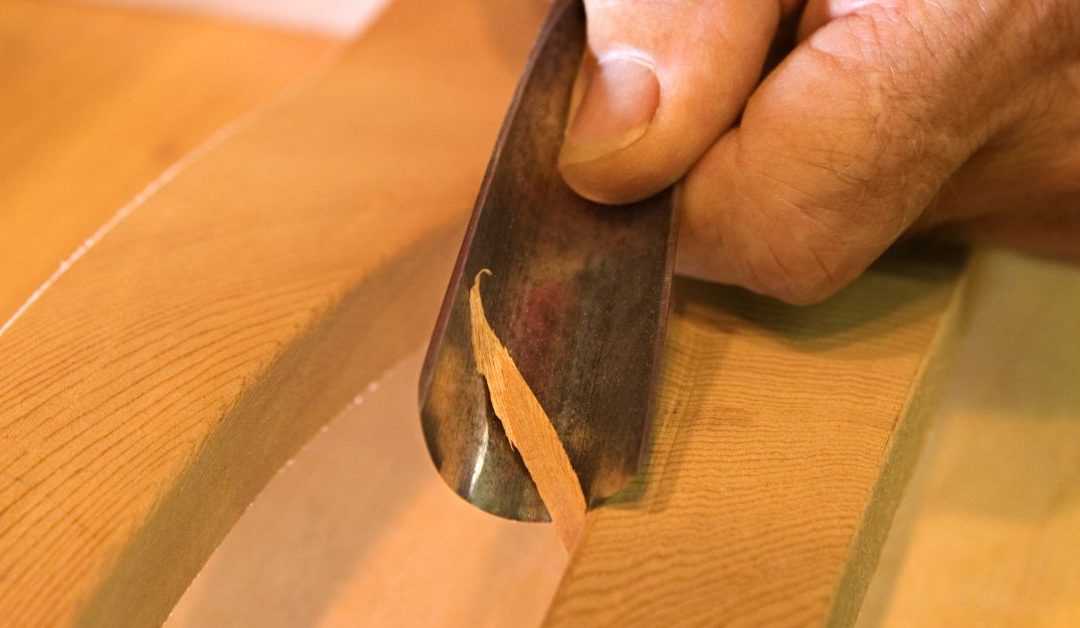Craftsmen in Moroccan woodworking have used the Hamsa Hand, a special symbol, for a long time. It’s a part of the culture, and tradition, especially in furniture design.
People believed that this hand-shaped symbol could protect them from evil spirits in the past. Nowadays, the Hamsa is still a big inspiration for many craftsmen and designers.
In this article, we will learn about the importance of the Hamsa Hand in Moroccan woodworking. Plus, how it influences modern designs worldwide.
Origin And History Of The Hamsa Hand
The Hamsa hand has been a part of Moroccan woodworking for a long time. The Hamsa hand holds a special meaning and people connect it to their spiritual beliefs.
Both Jews and Muslims used the Hamsa hand to protect themselves from bad energy. They believed it could bring good luck and keep away bad things.
The shape of the Hamsa hand looks like an open palm with five fingers. Many ancient cultures in North Africa and the Middle East used this symbol. It reminds us to be kind, fair, humble, and peaceful.
Wearing or keeping an amulet or talisman with the Hamsa hand can give us strength when things are hard. It can make us feel better even in difficult times. Some people think it can bring wisdom, fertility, health, and peace.
When we have these symbols in our lives, we can connect with ourselves and our faith deeper. It can make us feel protected and closer to something greater than ourselves.
Symbology Of The Hamsa Hand
The Hamsa hand is a special symbol that brings protection and good luck. People have been using the Hamsa hand for a long time because they believe it can keep away bad things. In Morocco, craftsmen make the Hamsa from wood, and it represents blessings, peace, joy, and prosperity. People from different religions and cultures, like Jewish, Hindu, and Muslim, use this symbol. In Moroccan communities, you can find the Hamsa on walls, doors, and furniture. People believe that it brings good things to those who have it. The Hamsa is not only a decoration, but it keeps people safe too. Moroccan craftsmen and women make beautiful things with the hamsa symbol. These include doors and jewelry, to bring happiness into people’s lives.
Traditional Uses Of The Hamsa Hand
The Hamsa hand is a special symbol in Moroccan woodworking. Carved onto furniture and jewelry, Hamsa has different meanings in stories and religious customs. People carve it on wooden boxes to protect special things from evil spirits. They put it on doorways to bring good luck and safety to the people inside. People believe that the Hamsa hand keeps away bad energy and brings prosperity. They carve it into furniture, like tables and chairs, to bring blessings to those who use them. The Hamsa hand is important in Moroccan culture and traditions.
Hamsa Hand In Moroccan Woodworking
The Hamsa hand is a symbol of power, protection, and good luck in Morocco. For a long time, people have used the Hamsa hand to keep away bad spirits and bring prosperity to homes and businesses. That’s why you can find it in many Moroccan woodworking pieces.
You can see the Hamsa hand in different types of Moroccan woodworking. From doors with intricate carvings to beautiful jewelry boxes. It adds beauty and cultural significance to these handmade items. Sometimes, it even has detailed designs like flowers or animals.
When you see the hamsa hand on furniture or other wooden objects made from cedarwood or olive tree branches, it makes the room look more beautiful. It shows the skill and tradition of Moroccan artisans.
No matter what woodworking project you’re working on, adding the Hamsa hand will make it special and unique. It’s a timeless symbol that fits both classic and modern designs, bringing a touch of tradition and style to your creations.
Next up we’ll explore variations on the traditional hamsa hand motifs used by master artisans across Morocco over time…
Variations Of The Hamsa Hand
I’m fascinated by the Hamsa Hand and its many variations.
It’s a representation of power and protection, which is why it’s so popular in Moroccan woodworking.
The design elements, such as eye and hand shapes, have a deep symbology, making every piece unique and special.
I love exploring the endless possibilities of the Hamsa Hand in my woodworking.
Hamsa Hand Symbology
The Hamsa hand is a very special symbol in Moroccan woodworking. People have used it for a long time to protect against bad luck and evil spirits. The shape of the hand represents the power of God and shows strength and protection.
In some cultures, like in North Africa, the hamsa hand is a sign of good fortune and having children. But be careful, many copies of this symbol don’t have the same meaning. A real expert can tell the difference and make sure you’re getting an authentic piece.
No matter how popular it becomes in other places, we should never forget its original meaning and where it comes from. Artisans will make sure its religious and spiritual meaning is always remembered. This is as long as artists keep making beautiful things inspired by the Hamsa hand.
Hamsa Hand Design Elements
The design of a Hamsa hand is very important and has many details to consider. It needs to have the right shape, size, and colors to look authentic. Interior designers often use this symbol because it has cultural meaning and looks beautiful. Sometimes the design may have different animals or symbols. But, the original form is the most powerful for protection and strength. Each part of the Hamsa hand has a special meaning, so choose with care if you want something unique!
Cultural Significance Of The Hamsa Hand
The Hamsa hand is a special symbol in Moroccan woodworking culture. It represents the culture and has spiritual meaning. It’s believed to protect against evil spirits. Moroccan art and design incorporate the use of the Hamsa hand in various ways. It’s carved into furniture, like tables and chairs, and used as decorations on walls and doors. You can find it on jewelry boxes and mirrors. The Hamsa hand is more than a decoration. It reminds people of their faith and heritage and gives them hope. Moroccan woodworking incorporates the Hamsa hand as an important symbol. Thus, artisans will continue to showcase it in new and creative ways in the future.
Hamsa Hand In Contemporary Design
The Hamsa hand is a special symbol that represents protection and is important to Moroccan woodworkers. Woodworkers use the Hamsa hand in modern designs to honor tradition and create beautiful artwork. They have been using the Hamsa hand in woodworking for a long time, and it adds a special touch to the pieces they create. It is a symbol that inspires creativity and respect for history. It will continue to be a meaningful symbol in the future.
Hamsa Hand Carvings In Woodworking
The Hamsa hand is a special symbol in Moroccan woodworking. It represents protection, guidance, and strength. Craftsmen use it to create beautiful artwork that tells stories and carries deep spiritual meaning. The Hamsa hand is present everywhere in Morocco’s history and culture. It is both meaningful and appealing, with intricate details and bold lines. You can see it in various forms of artwork, and it plays an important role in how people connect with their traditions and each other. In the future, we can expect to see even more creative uses of this symbol in different areas like architecture and fashion design.
Applications Of The Hamsa Hand In Other Crafts
The Hamsa Hand is a symbol that brings protection and good luck in many cultures, especially in the Middle East. Skilled Moroccan woodworkers have been using this symbol for a long time in their crafts, like making furniture and jewelry.
This symbol has a long history and carries special meaning. It’s believed that having the Hamsa Hand can bring good luck and keep away bad spirits. That’s why many artisans use it in their work, even if they don’t understand its deeper meanings.
You can still see this ancient symbol in Moroccan workshops today. Artisans use in different materials like wood, metal, stone, and clay to create beautiful art. It shows how important religious symbols are in both traditional and modern art all around the world.
With this in mind, let us now explore how the Hamsa Hand has influenced the wider world…
How The Hamsa Hand Has Influenced The World
The Hamsa Hand is a symbol of protection that Moroccan woodworkers have used for a long time. It has a hand shape with an eye in the center. This symbol is important in rituals and has spiritual meanings in traditional life. It’s believed to bring luck and fortune to people who wear or display it. The Hamsa Hand can be present on jewelry and home decor made from different types of wood. It’s a talisman that protects against evil and brings good luck.
The Hamsa Hand is not only used in woodworking, but it has significance as well in literature, music, art, and religious ceremonies. This symbol has a long history and has influenced many cultures around the world. It continues to be important today, reminding us of its origins in Moroccan woodworking heritage. The Hamsa Hand represents peace, love, prosperity, and happiness.
It has a big impact on society, inspiring many different ways of understanding while still keeping its original purpose. This is to bring positivity and joy to people’s lives forever.
Frequent-Asked Questions
Where Can I Buy A Hamsa Hand Carving?
Did you know that in Morocco, there are more than 500 different styles of handcrafted woodworking? You can find beautiful Hamsa Hand carvings at local markets and specialty shops. Skilled Moroccan artisans use traditional methods to carve each unique piece. You can use these carvings as decoration or hang them up for good luck. When shopping, compare designs to find the best quality piece from an expert woodworker!
How Much Does A Hamsa Hand Carving Cost?
The cost of a Hamsa hand carving can change a lot based on its size and how well it’s made.
The Hamsa hand symbol is very important in Moroccan culture and is visible on decorative items and jewelry.
Smaller carvings may cost as little as $25 while larger ones with intricate details can be upwards of several hundred dollars.
A professional woodworker will take into account not only the size but also the complexity of the design when pricing out their work.
What Is The Difference Between A Hamsa Hand And An Eye Of Horus?
The Hamsa hand and the Eye of Horus are two symbols that are popular due to their cultural significance.
The Hamsa is a palm-shaped amulet found in various religions, including Hinduism, Judaism, and Islam. It’s often used as a protective symbol against negative energy or evil forces.
Yet, the Eye of Horus is an ancient Egyptian symbol that represents protection, royal power, and good health. People associate this eye with the Christian faith because they believe it represents God’s watchful gaze over us.
While both symbols share similar meanings, they differ in design and origin.
What Is The Spiritual Meaning Of The Hamsa Hand?
The Hamsa hand is a special symbol with a lot of meaning. People have been using it for a long time in many different cultures. Moroccan woodworking, it’s seen as a powerful charm that protects against bad things happening. The Hamsa hand is more than protection, though. It as well represents belief in God’s power, hope, strength, blessings, and good luck. It reminds us to always have faith in something greater, no matter what happens in life.
Is It Possible To Make A Hamsa Hand Carving Myself?
You can make your own Hamsa hand carving! There are different woodworking techniques you can use, depending on the level of difficulty you want. It’s important to choose the right tools for the job. If you want to create detailed designs, you’ll need specific tools.
With patience and practice though, anyone can learn how to craft their very own hamsa hand carving!
The Hamsa Hand is a powerful symbol of protection and blessing in Moroccan woodworking. For centuries, people in Morocco have used wood carving to ward off evil spirits and bring good luck, making it an important part of their culture.
The artisans create intricate carvings with love and care. This showcases their craftsmanship and skill.
It’s no surprise that these unique designs have become popular around the world. Statistics show that sales of Hamsa Hand carvings have grown that much over the past few years!
I’m proud to be part of this rich tradition, helping create beautiful pieces for people to cherish for generations.
It’s no surprise that these unique designs have become much popular around the world. Statistics show that sales of Hamsa Hand carvings have grown over the past few years!
I’m proud to be part of this rich tradition, helping create beautiful pieces for people to cherish for generations.







